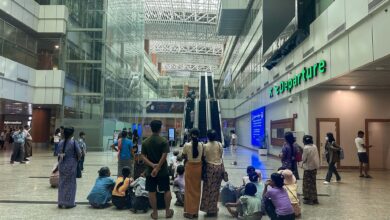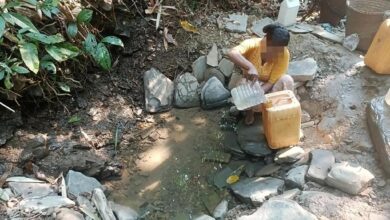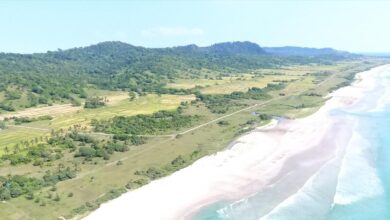
In several townships some 150km or more north of Mandalay, Myanmar’s civilian National Unity Government (NUG) has planted the first seeds of what it hopes will grow into a country with a functioning justice system.
As the regime that seized power in February 2021 continues to prosecute its opponents in courts under its control, the NUG has begun establishing a judiciary of its own in townships that are at least 75% under the control of resistance forces.
While this is happening in a number of anti-junta strongholds, the most concerted effort to date has been in the area near where the Ayeyarwady River enters Sagaing Region from neighbouring Kachin State. Here, the NUG has laid the groundwork for a judicial system that aims to replace the one that currently serves as part of the junta’s mechanism of oppression.
On October 15, the NUG opened its first formal courthouse in Katha Township, some four months after it began conducting judicial procedures there and in Kawlin, Wuntho and Pinlebu townships, which are all part of Sagaing’s Katha District.
“We didn’t have a permanent office when we started, so we just went around the township to carry out our activities,” said an official from the Katha Township court.
According to the official, the NUG initiated its efforts in response to the need to address a number of criminal and civil cases in areas under its de facto control. At present, this includes four cases—one civil and three drug-related—being tried in the Katha court.
To make arrests in the criminal cases, the court has enlisted the People’s Security Force—comprised of former law enforcement officers taking part in the Civil Disobedience Movement—as well as armed resistance groups, the official added.
Establishing rule of law
In Htigyaing, another township in Katha District that has more recently begun to institute NUG judicial procedures, local resistance authorities have built an office that also serves as a temporary courthouse and jail.
“It’s still not possible to build courthouses in every township, so for now, we are using our office to deal with court cases,” said an officer of the Htigyaing People’s Administration Team.
According to the officer, there are also plans to extend the NUG’s administration, including its judicial system, to Indaw and Banmauk townships to the north and Kanbalu District to the south. The idea, she said, is to create a “liberated area” where the resistance can consolidate its role in local affairs.
“We have even started running our own schools, thanks to the education department,” she said.
At present, it is unclear if the regime’s judicial system is functioning at all in any of these townships. Police under the command of the military are active in only a handful of urban areas, and are mainly engaged in arresting anyone suspected of having ties to the anti-junta forces.

For Thein Oo, the NUG’s minister of justice, the creation of courthouses is essential to the struggle to remove the junta from power, because it serves to deepen confidence in the ability of the resistance to rule effectively.
“We need to establish rule of law, and courthouses are necessary to achieve that. This is to let the public know that we can, in fact, establish peace and stability for them,” he said.
Speaking to Myanmar Now recently, the exiled minister said that the NUG has so far managed to implement its plans for an independent judiciary in 24 of Myanmar’s 330 townships.
Looming threat
While the resistance continues to make strides towards achieving actual governance powers, however, the military threat continues to loom over its efforts.
This was very dramatically demonstrated on September 16, when the regime carried out airstrikes on the village of Letyetkone in Sagaing’s Depayin Township. At least 13 people were confirmed killed in that attack, which targeted a resistance-run school. More than half of the victims were children.
More recently, on October 25, the military launched an aerial assault on the village of Hpalanpin in Pale Township, also in Sagaing. Most of the victims in that attack, which the regime said was aimed at rescuing prisoners held by resistance forces, were detainees at a local People’s Administration Team office.
While Depayin and Pale townships are both closer to military command centres than Katha and Kanbalu districts, no part of the country is completely safe from attack. It was for this reason that Myanmar Now’s sources declined to disclose the exact location of the NUG-administered courthouses in northern Sagaing.
When the military sent fighter jets from Mandalay to Hpakant Township in Kachin State on October 23 to wipe out scores of people attending a music festival held to celebrate the founding of the Kachin Independence Organisation (KIO), it sent an especially chilling message to Myanmar’s resistance.
Not only did this indicate the range of the junta’s destructive power (Hpakant is some 160km north of Katha), it also targeted a key ally of the NUG. The Kachin Independence Army, the KIO’s armed wing, has played a major role in both training and arming resistance forces in the country’s north.
It is clear, then, that even as the NUG strives to move beyond the military struggle, much remains to be done on the battlefield before it can deliver on its promises of peace and stability.



